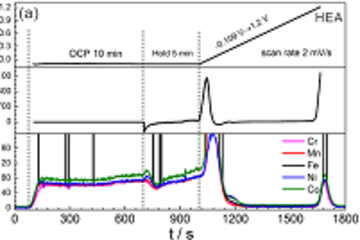All genres
541.
Poster
Error Analysis of the Crystal Orientations and Misorientations obtained by the Classical Electron Backscatter Diffraction Method. IMC 2014, Prague, Czech Republic (2014)
542.
Poster
Error Analysis of the Crystal Orientations and Misorientations obtained by the Classical Electron Backscatter Diffraction Method. MSE 2014, Darmstadt, Germny (2014)
543.
Poster
Error Analysis of the Crystal Orientations and Misorientations obtained by the Classical Electron Backscatter Diffraction Method. RMS EBSD 2014, London, UK (2014)
544.
Poster
On the accuracy and precision of orientations obtained by the conventional automated EBSD method. RMS EBSD 2014, London, UK (2014)
545.
Poster
Correlative measurement of the 5-parameter grain boundary character and its physical and chemical properties. RMS EBSD 2014, London, UK (2014)
546.
Poster
Design of ductile Mg alloys by combining ab initio and experimental methods. Euromat 2013, Sevilla, Spain (2013)
547.
Poster
Discrete dislocation pattern observation around nanoindents using cECCI. GDRI CNRS Mecano General Meeting, MPI für Eisenforschung GmbH, Düsseldorf, Germany (2013)
548.
Poster
3D-reconstruction of Geometrically Necessary Dislocation densities. RexGG 2013, Sydney, Australia (2013)
549.
Poster
Towards Comprehensive Crystalographic and Property Characterization of Grain Boundaries. Fachbeiratsitzung 2013, MPIE, Düsseldorf, Germany (2013)
550.
Poster
Kikuchi Bandlet Method: A Method to Resolve the Source Point Position of an EBSD Pattern. 15th European Microscopy Congress (EMC), Manchester, UK (2012)
551.
Poster
Grain structure and irreversibility line of a bronze route CuNb reinforced Nb3Sn multifilamentary wire. Superconductivity Centennial Conference, The Hague, The Netherlands (2011)
552.
Poster
Advanced crystallographic & topological analysis tools for tomographic characterization of interfaces and deformation structures obtained via 3D-EBSD. Fachbeiratsitzung 2011, MPIE, Düsseldorf, Germany (2011)
553.
Poster
3D-observations and modeling of nucleation during recrystallisation in a heavily deformed Fe-Ni alloy. Materials Science and Engineering MSE 2010, Darmstadt, Germany (2010)
554.
Poster
Study of Deformation Mechanisms in Mg and MgY. Workshop "Facets of Electron Crystallography", Berlin, Germany (2010)
555.
Poster
Application of 3D EBSD-based orientation microscopy to the observation of damage in TRIP steels. Advanced methods in EBSD 2010, Saint Etienne, France (2010)
556.
Poster
Three dimensional characterization of microstructure of an ultra fine- grained Cu–0.17wt%Zr. 1st MACAN 2009, Berlin, Germany (2009)
557.
Poster
3D-Orientation Microscopy in Electrodeposited CoNi. 15th International Conference on the Textures of Materials (ICOTOM 15), Carnegie Mellon University Center, Pittsburgh, PA, USA (2008)
558.
Poster
On the Role of Nucleation during Microtexture Evolution in CVD Deposition of Diamond Thin Films. 15 th International Conference on the Textures of Materials (ICOTOM 15), Carnegie Mellon University Center, Pittsburgh, PA, USA (2008)
559.
Poster
Distinction of different Laves phase types by EBSD in a TiCr diffusion couple: Robust detection of subtle differences in EBSD patterns. Electron Backscatter Diffraction Meeting, RMS Conference, Sheffield, UK (2008)
560.
Poster
Investigations on the deformation mechanisms of TWIP steels using EBSD. EBSD 2008, Sheffield, UK (2008)











